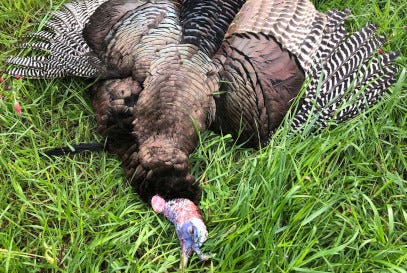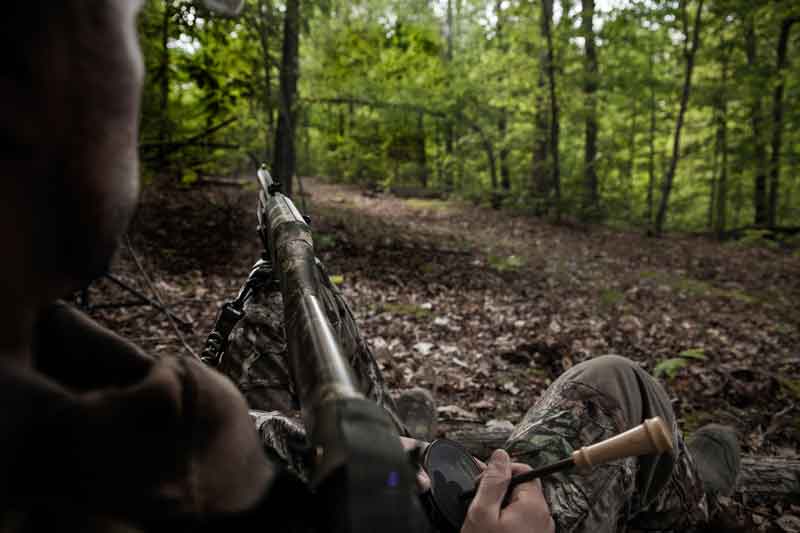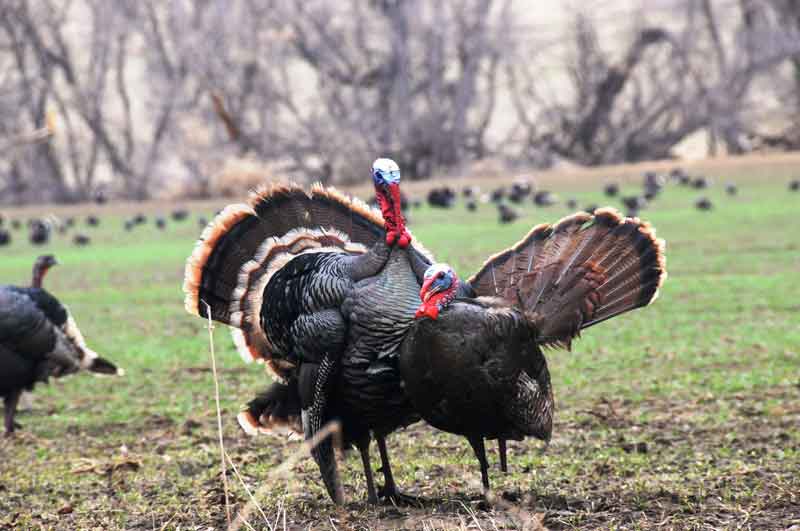- Feb 15, 2018
Turkey Season Prep
While some consider spring the “offseason” there is a group of fanatical individuals across the country who are just getting prepped for the highlight of their year. Turkey hunters are a special breed of people who tend to take their sport to the point of obsession. While we do not condone a complete disregard for your personal responsibilities for 2-6 weeks out of the year, we do understand. With a season this short, it is even that much more important to make sure that you properly prep in the weeks leading into season. To help you on your way we have provided some tips for getting ready for turkey season:
KNOW YOUR LAWS
This is more of a caveat than a tip, but before reading on please refer to your state laws on baiting. Laws on supplemental feeding differ state to state, and we do not promote any activities or practices that could be considered unlawful or prohibited in your area. Please take any feeding recommendations we provide with a grain of salt, and interpret them to be within local laws. If you are unsure about the baiting laws of your state, the NWTF has kindly consolidated the game agency websites for each state here: http://www.nwtf.org/hunt/article/2018-spring-hunt-guide.
FEED THE ROADS
Most states allow offseason feeding as long as the feed has been removed or consumed for a given period of time, so the recommendation is to start as early as you can. Feeding turkeys is an obvious method for success, but the strategy we have found most successful is to hook up a spreader to the back of a vehicle and ride the roads leaving a thin trail of corn in your path.
Turkeys are wandering critters by nature, and no corn pile is tall enough to stop that from happening. By spreading your corn across the property, you can play into that wandering nature while keeping them in a more manageable area. Flocks will tend to stick in a particular roost area during mating season, so the goal here is to have them nearby when the change begins to happen. Also, turkeys are lazy and naturally like roads and paths with little to no obstruction and getting them used to cruising your accessible roads should help both keep your setups in manageable areas and forecast their paths when coming to a call.
STRATEGIC FEEDERS
Again, feeding turkeys is not new information, but there are ways you can set up your feeders to help attract, scout, and pattern your population. Again, always remember to take your feeders down at a time that would keep you consistent with the laws in your area.
- Create a primary kill spot – strut zones make the best kill zones – so try and establish one for your flock. You are looking for a wide open, mostly flat area. Ideally it is 100 yards or less across so that you do not have to pull them too far to get a shot. The goal here is to pattern them to consistently come to this location looking for food, then let that seamlessly turn into a strut zone. If you are using multiple feeders, this one should be throwing at least twice as much feed as the others to establish it as the primary destination. If you have a Moultrie Mobile, this is another great way to take inventory of your turkey population without adding pressure.
- Create a routine – as with the feeders, you need to be aware that turkeys will wander throughout the day, so it is good to give them multiple locations to travel to throughout the day. Using multiple small capacity feeders, like the 5-Gallon Standard, you can cover a good bit of ground without breaking the bank. Place these feeders on high traffic areas between strut zones, roost trees, and water sources. The goal here is not to hold them to a particular spot, but to encourage them to use paths that would give you access to a setup spot.
PREPPING FIELDS & CONTROLLED BURNS
While you don’t want to add a ton of pressure right before the season starts, standard land management practices can be huge draws to wild turkeys. Turning the soil in preparation for an April or May plot planting will bring all kinds of tasty morsels like bugs, worms, and seeds up to the surface – making a fresh buffet.
Controlled burns are another great way to entice turkeys to come in. By clearing out the brush and introducing new fresh ground, turkeys will dive in as quick as they can, sometimes to the point of singeing their beards in the process. This is a great way to bring birds to your property, but due to the machinery often needed to clear the fire paths around the burn areas, you might want to plan a few weeks before season to keep from adding undue pressure right during the change.
SCOUTING & PATTERNING
This seems obvious, but cameras are often overlooked when scouting for turkey. This can not only help you assess your flock, you can also discover their patterns and paths, and also start to assess what stage of the mating process the birds are in. Using a cellular product like Moultrie Mobile is especially helpful since the change can happen so quickly.



